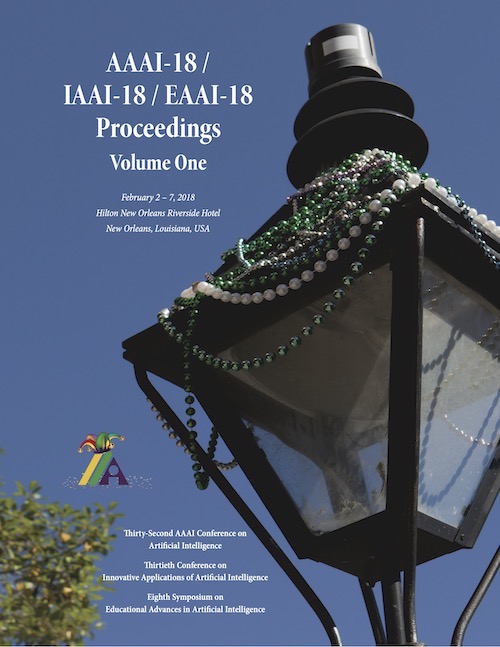Published:
2018-02-08
Proceedings:
Proceedings of the AAAI Conference on Artificial Intelligence, 32
Volume
Issue:
Thirty-Second AAAI Conference on Artificial Intelligence 2018
Track:
Main Track: NLP and Machine Learning
Downloads:
Abstract:
A major goal of grounded language learning research is to enable robots to connect language predicates to a robot's physical interactive perception of the world. Coupling object exploratory behaviors such as grasping, lifting, and looking with multiple sensory modalities (e.g., audio, haptics, and vision) enables a robot to ground non-visual words like ``heavy'' as well as visual words like ``red''. A major limitation of existing approaches to multi-modal language grounding is that a robot has to exhaustively explore training objects with a variety of actions when learning a new such language predicate. This paper proposes a method for guiding a robot's behavioral exploration policy when learning a novel predicate based on known grounded predicates and the novel predicate's linguistic relationship to them. We demonstrate our approach on two datasets in which a robot explored large sets of objects and was tasked with learning to recognize whether novel words applied to those objects.
DOI:
10.1609/aaai.v32i1.11966

AAAI
Thirty-Second AAAI Conference on Artificial Intelligence 2018
ISSN 2374-3468 (Online) ISSN 2159-5399 (Print)
Published by AAAI Press, Palo Alto, California USA Copyright © 2018, Association for the Advancement of Artificial Intelligence All Rights Reserved.
